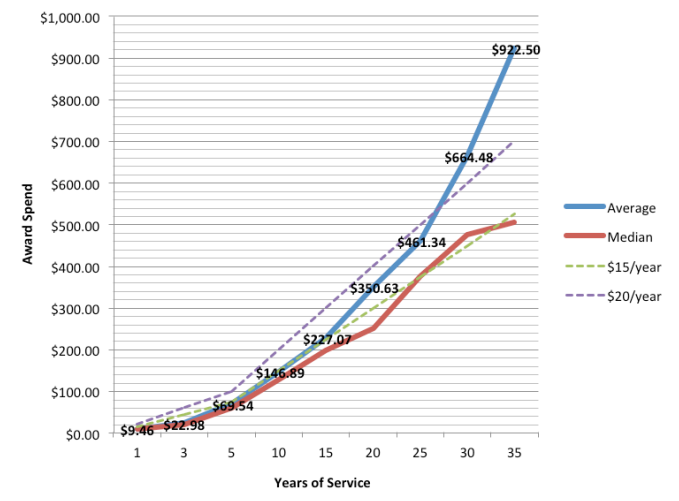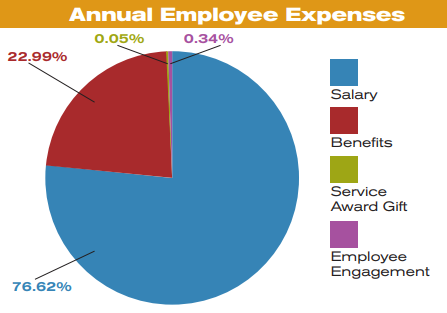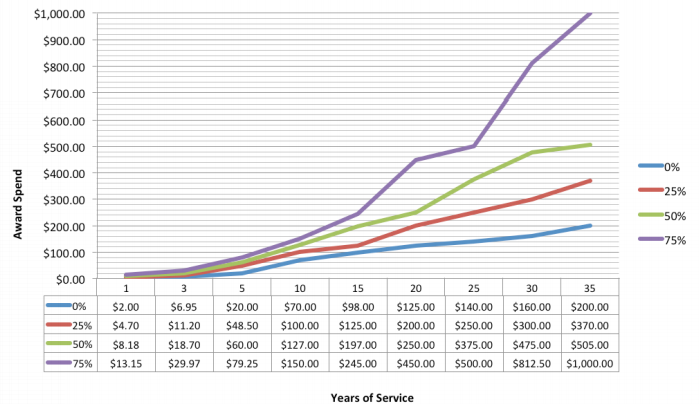Just how much are your employees worth?
Dec 28, 2014
Written by: Steve Huffman
(View Author Bio)
Engaging loyal employees starts with recognizing milestones.
Scroll Down
Overview
The average tenure for an American worker is less than five years. And studies show that after six months at a new job, 40% of employees are already disengaged. With startling numbers like these, it’s not hard to see that recognizing employee milestones and implementing other employee engagement initiatives need to be an integral part of your organization’s strategy.
The average tenure for an American worker is less than five years. And studies show that after six months at a new job, 40% of employees are already disengaged. With startling numbers like these, it’s not hard to see that recognizing employee milestones and implementing other employee engagement initiatives need to be an integral part of your organization’s strategy.
Today’s workforce is changing. Here’s why:
- Talent wars: The war for talent is real and happening right now. If you don’t have a strategy in place, you become someone else’s leverage. Right now, between 70% and 84% of employees are looking for another job. Likely some of your employees.
- Talent development: This remains key to retention. Those companies who do it best are investing in building and retaining their existing talent pool — and companies failing to do so will likely become irrelevant.
- Employees gain power: Loyalty as we knew it is gone. The employer will no longer define the workplace; employees’ priorities and preferences will dictate what the future holds.
So what can you do to combat these trends and keep your employees longer? Realize this: recognition works.
Recognizing employee milestones successfully drives higher retention rates, productivity and customer satisfaction. Engaged employees:
- Are 87% less likely to leave an organization
- Have 18% higher productivity
- Typically score between 12% and 34% higher in customer satisfaction ratings.
Recognizing employees at one year or even six months — rather than waiting until the more traditional three- or five-year mark — helps drive engagement and significantly increases their loyalty to your organization.
How much are employees worth?
So just how much should you spend on length-of-service awards? And what are other companies spending on their service awards? The chart below compiles data from a wide range of programs to give us a clearer picture:

On average, companies spend between $15 and $20 per year of service — or between $150 and $200 for a 10-year service award. (This doesn’t include extra costs like shipping, taxes and company communication pieces that will add to the expense of the program.) However, there are slight exceptions depending on length of service. At the one-year mark, service awards have a price tag of $10 to $15. And around the 25-year mark, program budgets tend to skew higher than this $15 to $20 standard — often reaching more than $26 per year of service at the 35-year mark.
Compare the price of service awards and employee engagement initiatives with other employee costs, such as healthcare benefits, and you’ll quickly see that they make up a small portion of an organization’s annual contribution per employee.

To put this chart in perspective:
- A five-year service award of $100 will cost $0.0096 per hour of work, or less than 1 cent per hour for recognizing over 10,000 hours of work.
- The average corporate expenditure per employee for health insurance is $1.50 per hours worked, or an annual contribution of $3,150.
- An employee who’s been with a company for five years will cost his or her organization, on average, more than $15,750 for health insurance, while the average cost to recognize this same employee with a length-of-service award only comes in at $100.
Celebrate service and employees will stay.
Service anniversary awards celebrate longevity and are proven to make a huge impact on employee engagement and retention. Many companies have taken note of this positive effect by adding one and three years to recognized milestones to show their dedication to employees early on in their career. These earlier service anniversary milestones also create a culture that helps to embrace and extend authentic employee loyalty.
Is your company's service anniversary program best-in-class?
Compare your organization’s budget to the averages to see where your program falls along the cost spectrum.

Read the full article.
Submitting your information allows us to reach out to you in the future.











